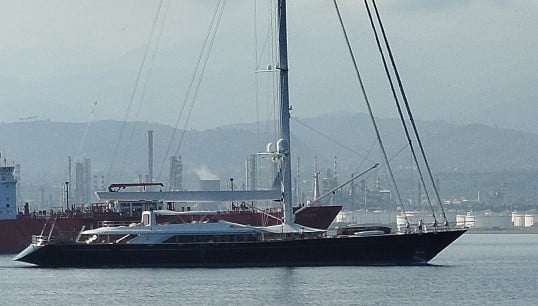- Topics
- Campaigning
- Careers
- Colleges
- Community
- Education and training
- Environment
- Equality
- Federation
- General secretary message
- Government
- Health and safety
- History
- Industrial
- International
- Law
- Members at work
- Nautilus news
- Nautilus partnerships
- Netherlands
- Open days
- Opinion
- Organising
- Podcasts from Nautilus
- Sponsored content
- Switzerland
- Technology
- Ukraine
- United Kingdom
- Welfare

When the UK-flagged sailing yacht Bayesian sank off the coast of Sicily in August 2024, Nautilus International called for restraint – asking the media and public to allow investigations by the British and Italian maritime accident investigators to proceed without external pressure or pre-judgment.
A year on, these investigations are still being carried out. The criminal investigation, initiated by Italian prosecutors, has officially put Captain James Cutfield, chief engineer Timothy Parker Eaton and deckhand Matthew Griffiths under investigation, although this does not imply guilt or mean that charges will necessarily be brought. These proceedings are running alongside a British inquest into the deaths of the yacht's owner Mike Lynch, his daughter, and two other UK nationals.
With the release of a preliminary report by the UK Marine Accident Investigation Branch (MAIB), however, some answers are beginning to emerge about the causes of the accident, in which a total of seven people died, including a crew member.
MAIB findings
Published on 15 May 2025, the MAIB's interim report lays out the nature of the accident. The eventual full report promises to offer comprehensive guidance and safety action plans to prevent similar catastrophes at sea.
The interim report points to extreme winds and instability: convective storm squalls hit the vessel with gusts exceeding 63–73 knots (73–84 mph). These winds, striking the hull beam-on, overwhelmed the yacht, tipping it 90° in under 15 seconds.
There were also unrecognised vulnerabilities: with sails furled and the centreboard raised for motoring, the yacht's angle of vanishing stability dropped to just 70.6°, rendering it capsize‑prone under such gusts. Crucially, the Stability Information Book (SIB) aboard made no mention of this – neither owners nor crew were aware of it.
Another issue was rapid flooding and loss of power: witnesses and survivors reported water rushing over the starboard rail, entering stairwells, and knocking out power, leaving no time to respond before the yacht sank
Wider implications
Already, the early MAIB findings expose vulnerabilities in large sailing yachts, including an absence of real-world motoring stability figures in onboard manuals. Yachts like Bayesian, with tall rigs and high freeboard, are susceptible to sudden wind surges, yet safety system documentation may not cover all risks.
There may be a need in future for:
- complete stability assessments across all operational configurations
- technological enhancements such as real-time stability monitoring and early weather detection systems. Architects might need to re-examine profiles of tall-masted yachts to avoid similar capsizes from short-lived storm dynamics
- improved crew training, focusing on rapid storm response
Raising the vessel
New details of the vessel's sinking are likely to emerge, now that the vessel has been lifted for analysis onshore – an operation delayed by the tragic death of a salvage diver in May. Investigators will inspect the yacht, and prosecutors and lawyers representing victims and crew members will also be given access in order to build their cases.
Raising the Bayesian will allow investigators to verify critical elements flagged in the interim MAIB report, such as the position of the centreboard, any open hatches, and signs of structural damage, as well as retrieve onboard data for analysis.
The MAIB's final report – awaited in the coming months – will integrate these findings with existing weather and stability data, aiming to produce actionable safety recommendations for yachts and crews.
Waiting for answers
The raising of the Bayesian will begin a new chapter in the investigation, awaited by safety inspectors and prosecutors alike. While the MAIB's interim findings have already illuminated key weaknesses, the raised vessel promises to fill in gaps and propel regulatory change.
However, it is likely that the final MAIB report will take at least a year for completion, as tests must be conducted and interested parties notified and consulted with on the findings. In the long term, however, the case could reshape design and safety precautions for similar luxury craft.
Tags
